Heavenly Bamboo Nandina domestica 'Seika' (PBR)

ABOUT
Nandina domestica 'Seika', commonly known as Obsession Heavenly Bamboo or simply Heavenly Bamboo, is a striking evergreen shrub notable for its multi-season interest and vibrant foliage. Unlike the typical green of many plants, Obsession Heavenly Bamboo boasts leaves that emerge a bright, fiery red before maturing to a deep green color. This remarkable change in hue creates a captivating display in the landscape throughout the year. The leaves of Obsession Heavenly Bamboo are arranged in a unique, layered pattern along its cane-like stems, evoking the appearance of bamboo, despite it not being a true bamboo. Each leaf is compound, meaning it is made up of multiple smaller, lance-shaped leaflets that are arranged gracefully along a central stalk. This composition gives the foliage a feathery, fine texture, which is even more pronounced when the leaves flutter in the breeze. In the spring and summer months, the new foliage continues to emerge in shades of bright crimson, accenting the mature green leaves and keeping the plant colorful and dynamic. The contrast between the red young leaves and the older green ones adds significant ornamental value to gardens and landscapes. Furthermore, Obsession Heavenly Bamboo produces clusters of small, white flowers that add to its appeal. The flowers are generally star-shaped and delicate, and they form loose, airy clusters that stand above the foliage, giving the plant a soft, frothy appearance. As the seasons change, the color of the leaves may also take on different tones, often returning to reddish or purplish shades in the cooler months, providing a rich burst of color even when other plants have succumbed to the frost. In addition to its colorful foliage and charming flowers, Obsession Heavenly Bamboo can produce berries. The berries are bright red and round, creating a vivid contrast against the foliage, and they can also attract birds and wildlife to the garden. Overall, Obsession Heavenly Bamboo is a versatile and easy-to-care-for plant that provides year-round interest and a splash of color to any setting where it is grown. It is commonly used for mass plantings, as a focal point, or as part of mixed borders and foundation plantings.
About this plant
 Names
NamesFamily
Berberidaceae
Synonyms
Heavenly Bamboo, Sacred Bamboo
Common names
Nandina domestica 'Seika' (PBR).
 Toxicity
ToxicityTo humans
Heavenly bamboo, despite its beauty, contains compounds that can be toxic to humans if ingested. The berries in particular are known to contain cyanogenic glycosides, which can release cyanide in the body when digested. Symptoms of poisoning can include nausea, vomiting, abdominal pain, diarrhea, weakness, and in severe cases, respiratory failure and death due to the cyanide inhibiting the body's ability to use oxygen. It is important to avoid ingesting any part of this plant and to keep it away from children who might be tempted by the bright berries.
To pets
Heavenly bamboo is also toxic to pets, including dogs and cats. As with humans, the berries are especially dangerous because they contain cyanogenic glycosides that can lead to cyanide poisoning. Symptoms of poisoning in pets might include drooling, difficulty breathing, vomiting, diarrhea, seizure, and potentially death, if a large enough quantity of berries is consumed. Pet owners should prevent their animals from eating any part of the plant to avoid these risks.
 Characteristics
CharacteristicsLife cycle
Perennials
Foliage type
Evergreen
Color of leaves
Mixed
Flower color
White
Height
3-4 feet (0.9-1.2 meters)
Spread
3-4 feet (0.9-1.2 meters)
Plant type
Shrub
Hardiness zones
6
Native area
East Asia
Benefits
 General Benefits
General Benefits- Easy to grow – Nandina domestica 'Seika', commonly known as Heavenly Bamboo, is adaptable to a range of soil conditions and thrives with minimal care.
- Drought tolerant – Once established, this plant has low water requirements, making it suitable for xeriscaping or areas with water restrictions.
- Pest resistant – Heavenly Bamboo is rarely affected by pests, which reduces the need for chemical treatments.
- Year-round interest – With evergreen foliage, colorful berries, and seasonal color changes, Heavenly Bamboo provides visual interest throughout the year.
- Low maintenance – This plant requires minimal pruning and upkeep, which is ideal for gardeners seeking low-effort landscaping options.
- Attractive foliage – The plant features multi-colored leaves that change from green to reddish-purple, adding a splash of color to landscapes.
- Versatility – Heavenly Bamboo can be used in various landscape designs, including as a specimen plant, in borders, or as a hedge.
- Wildlife attraction – The berries produced by the plant can attract birds and other wildlife to the garden.
 Medical Properties
Medical Properties- This plant is not used for medical purposes.
 Air-purifying Qualities
Air-purifying QualitiesThis plant is not specifically known for air purifying qualities.
 Other Uses
Other Uses- Nandina domestica 'Seika', commonly known as Heavenly Bamboo, can be used in floral arrangements for its attractive foliage and berries, providing a unique texture and lasting color.
- The plant's stems can be woven into small handicrafts or basketry, offering a natural and rustic material for creative projects.
- The dense growth habit of Heavenly Bamboo can be used as a privacy screen in gardens, helping to create secluded areas or hide unsightly structures.
- During the winter, its bright red berries serve as a food source for birds, providing an eco-friendly way to support local wildlife.
- Heavenly Bamboo can be planted in containers and used as patio or balcony decorations due to its compact growth and seasonal interest.
- Its striking appearance makes it a popular choice for themed gardens, such as Asian or Zen garden designs, to evoke a particular aesthetic or atmosphere.
- The evergreen leaves can be used in crafts like wreath-making, especially around the holidays, for their durability and festive color.
- In photography, Nandina domestica 'Seika' can be a subject of interest due to its changing leaf colors and textured berries, offering a vivid backdrop or focal point.
- The wood of Heavenly Bamboo is sometimes used in small woodworking projects, such as the handles for various tools, because of its fine grain and strength.
- Artists can utilize the foliage and berries of Nandina domestica 'Seika' as inspiration for botanical drawings or paintings, capturing its delicate details and colors.
Interesting Facts
 Feng Shui
Feng ShuiThe Sacred Bamboo is not used in Feng Shui practice.
 Zodiac Sign Compitability
Zodiac Sign CompitabilityThe Sacred Bamboo is not used in astrology practice.
 Plant Symbolism
Plant Symbolism- Change and Transformation: The leaves of Nandina domestica, commonly known as Heavenly Bamboo, change colors with the seasons, symbolizing the adaptability and transformation that occur throughout life.
- Eternal Life: As an evergreen plant, Nandina symbolizes immortality and the idea of life continuing indefinitely, reflecting an enduring spirit or legacy.
- Good Fortune: In some cultures, the red berries of Heavenly Bamboo are associated with prosperity and good luck, often used in festive decorations to invite positive energy.
- Protection: Some believe that planting Nandina near the home can protect against negative influences and bring a sense of security to the inhabitants.
 Water
WaterSacred Bamboo should be watered regularly, about once a week during active growth periods, and less frequently during cooler months. It's important to allow the top inch of soil to become dry to the touch before watering again. Saturate the root zone with approximately 1 to 1.5 gallons of water per session, depending on the size and maturity of the plant and environmental conditions. Overwatering or allowing the plant to sit in water can lead to root rot, so ensure good drainage. During hot, dry spells, you may need to water twice weekly to maintain consistent moisture levels.
 Light
LightSacred Bamboo thrives in full sun to partial shade. The ideal spot for the plant offers bright, indirect sunlight for at least four to six hours a day, but it should also be protected from harsh afternoon sun, particularly in hotter climates. An eastern or western exposure with some dappled shade during the peak sun hours is often ideal for this plant.
 Temperature
TemperatureSacred Bamboo prefers moderate temperatures and will grow best in regions where the temperature generally remains between 10°F and 90°F. It can tolerate a few degrees lower than 10°F but should be mulched or protected during these times. The ideal temperature range for this plant is roughly 60°F to 80°F for optimal growth and health.
 Pruning
PruningSacred Bamboo benefits from pruning to maintain shape, encourage bushier growth, and remove any dead or weak stems. Prune in late winter or early spring before new growth begins. It does not need to be pruned annually, but doing so every other year can help invigorate the plant. Cut back up to one-third of the oldest stems to ground level to encourage new stems to grow.
 Cleaning
CleaningAs needed
 Soil
SoilHeavenly bamboo prefers a well-drained soil rich in organic matter, with a slightly acidic to neutral pH of 6.0 to 7.0. A mix of loamy garden soil, peat moss, and perlite can provide an ideal growing medium for the plant.
 Repotting
RepottingHeavenly bamboo doesn't require frequent repotting; doing it every 3 to 5 years is sufficient. Younger plants may benefit from biennial repotting to encourage growth.
 Humidity & Misting
Humidity & MistingHeavenly bamboo thrives in average home humidity levels but can tolerate some dryness. Aim for a humidity level around 30-50%.
 Suitable locations
Suitable locationsIndoor
Place heavenly bamboo in bright, indirect light indoors.
Outdoor
Plant in sun or part-shade; mulch to retain soil moisture.
Hardiness zone
6-9 USDA
 Life cycle
Life cycleNandina domestica 'Seika', commonly known as Sacred Bamboo or Heavenly Bamboo, starts its life cycle as a seed, which after a period of dormancy germinates in optimal conditions of warmth and moisture. The seedling emerges and develops into a young plant, featuring the plant's characteristic compound leaves. As the plant matures, it undergoes vegetative growth, forming a woody stem and a bushy structure with many cane-like stalks. Over time, usually by the second or third year, it reaches maturity and produces clusters of small, white flowers in the spring or early summer, which are attractive to pollinators. These flowers, if successfully pollinated, will develop into bright red berries by late summer or autumn, providing food for birds and initiating the seeding stage that can lead to new plants if the seeds are dispersed effectively. Sacred Bamboo has a perennial growth habit and can live and continue its growth and reproductive cycle for many years, given suitable growing conditions.
 Propogation
PropogationPropogation time
Spring-Early Summer
Nandina domestica 'Seika', commonly known as 'Obsession' Heavenly Bamboo, can be propagated by softwood cuttings taken in late spring or early summer. To propagate by this method, select healthy, non-flowering shoots and cut them into pieces about 4-6 inches (10-15 cm) long, making sure each cutting has at least two sets of leaves. Dip the cut end into rooting hormone powder to encourage root development and insert the cutting into a well-draining potting mix. The pots should then be placed in a warm, humid environment, out of direct sunlight. Keep the soil moist but not saturated, and in a few weeks, the cuttings should root successfully, at which point they can begin to be gradually acclimatized to less protected conditions before being planted out.
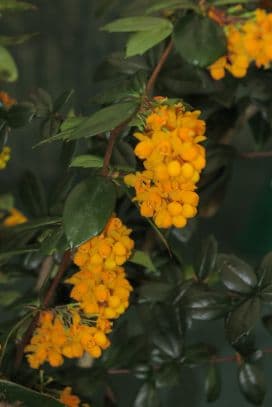
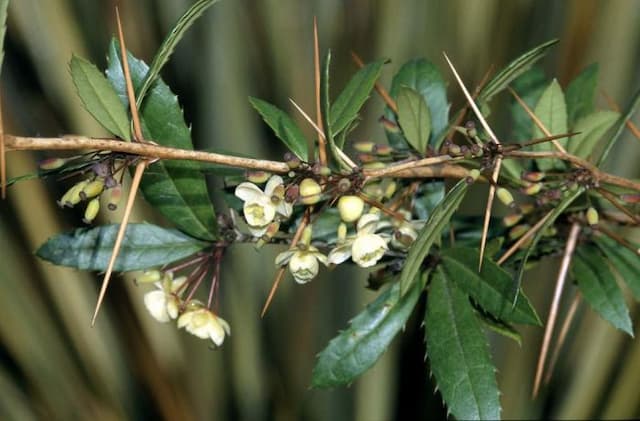
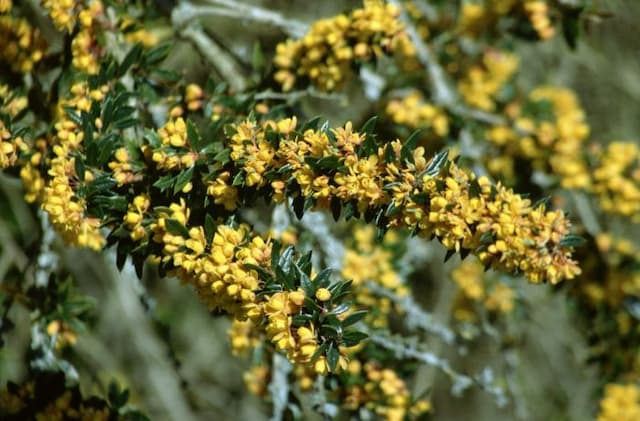
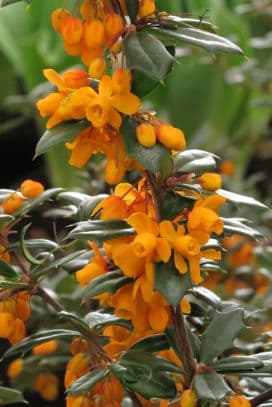
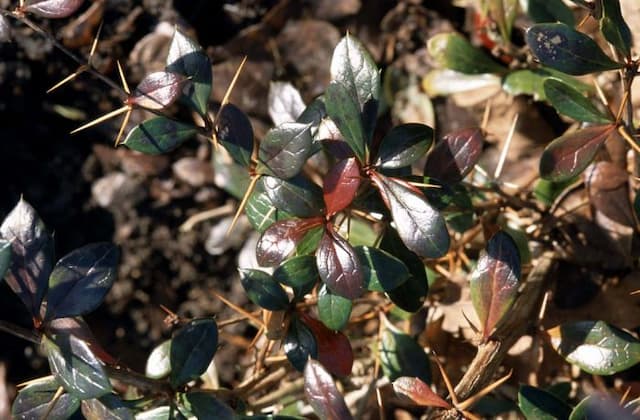



![Japanese barberry [Bonanza Gold]](/_next/image?url=https%3A%2F%2Fplants-admin.emdemapps.com%2Fimages%2Fplants%2F%2Fimages%2F604b5385e413f.png&w=640&q=75)
